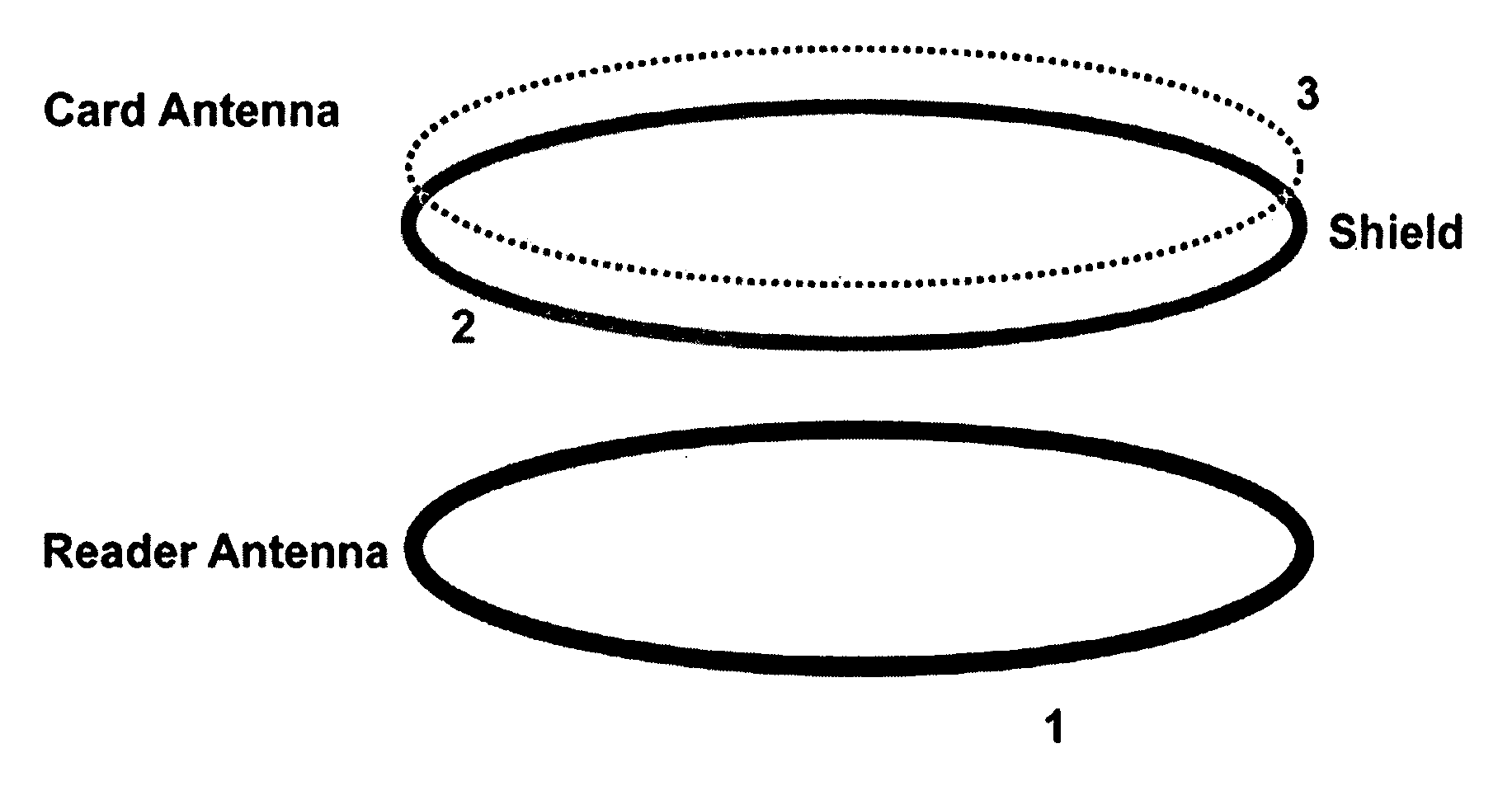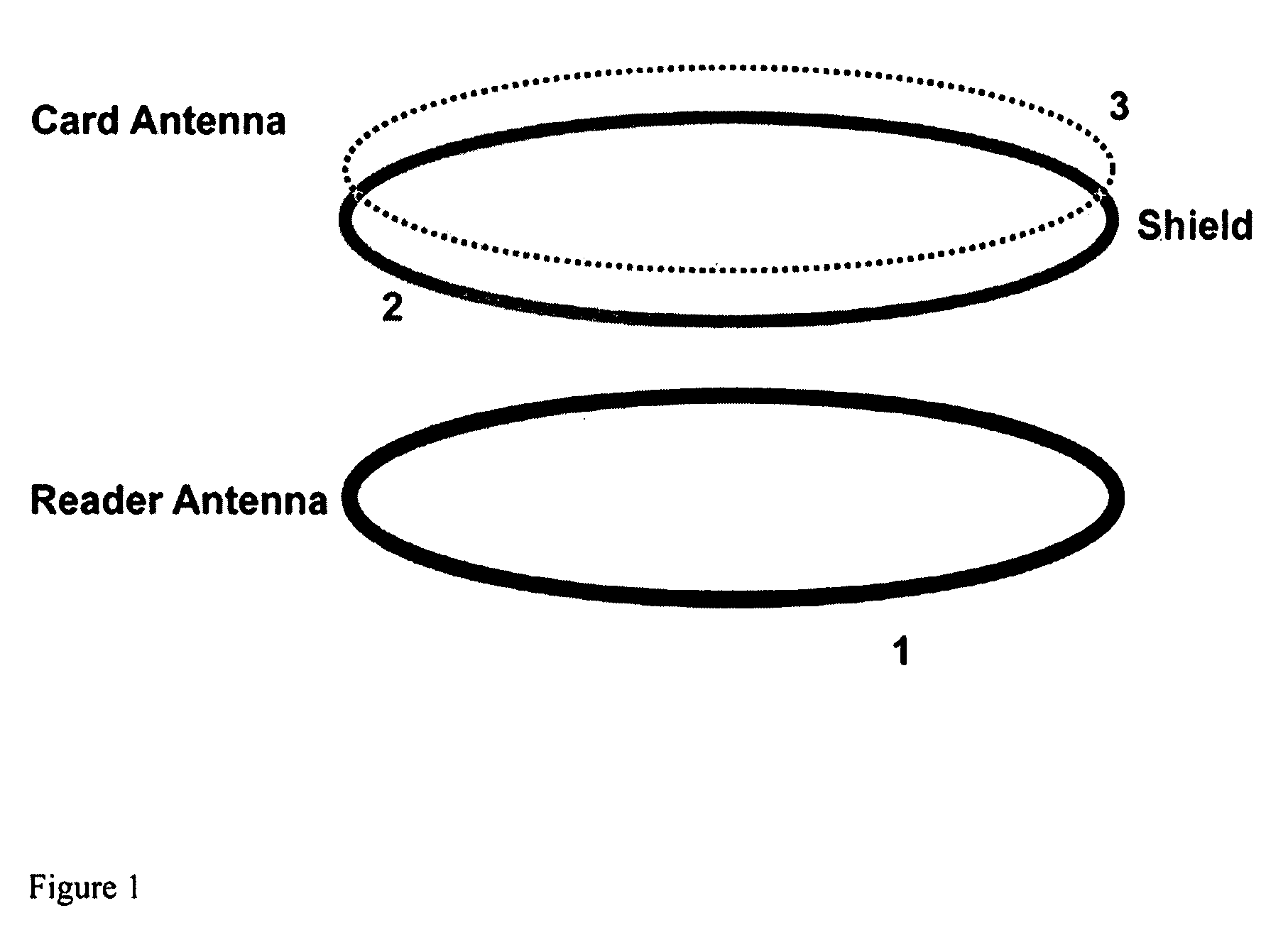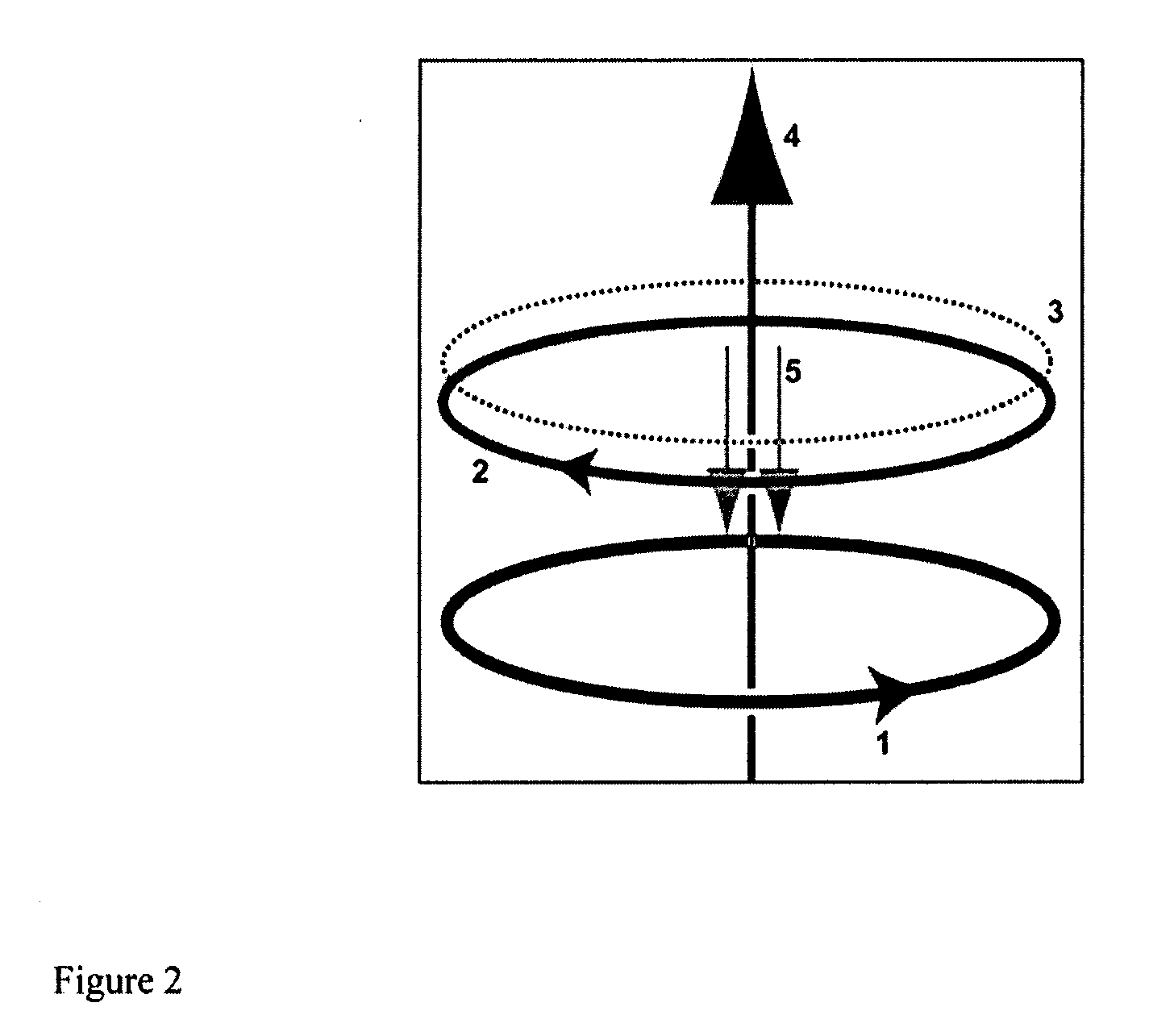Shield for radio frequency ID tag or contactless smart card
- Summary
- Abstract
- Description
- Claims
- Application Information
AI Technical Summary
Benefits of technology
Problems solved by technology
Method used
Image
Examples
Embodiment Construction
[0021]The use of a shield to modify the mutual inductance of the reader and the card and / or self-inductance of the card antenna allows for a shield design that can be tailored closely to requirements of multiple applications. This invention can be used to design a physical shield for “smart” contactless ID badges that are meant to both be read by a remote transceiver as well as be displayed visibly while inside the holder. Several different embodiments of a badge holder have been implemented and tested with cards that adhered to ISO / IEC7810 standard.
[0022]Although other materials can be used, aluminum is an inexpensive effective shielding material that can completely block a standard smartcard reader (for example Model SDO10, 13.56 MHz card readers sold by SCM Microsystems) when covering one side of a typical contactless smartcard. Even when a 2.5 cm strip along the side of the smartcard is exposed, a shield covering the remaining portion has been shown to reduce the distance at whi...
PUM
 Login to View More
Login to View More Abstract
Description
Claims
Application Information
 Login to View More
Login to View More - R&D
- Intellectual Property
- Life Sciences
- Materials
- Tech Scout
- Unparalleled Data Quality
- Higher Quality Content
- 60% Fewer Hallucinations
Browse by: Latest US Patents, China's latest patents, Technical Efficacy Thesaurus, Application Domain, Technology Topic, Popular Technical Reports.
© 2025 PatSnap. All rights reserved.Legal|Privacy policy|Modern Slavery Act Transparency Statement|Sitemap|About US| Contact US: help@patsnap.com



